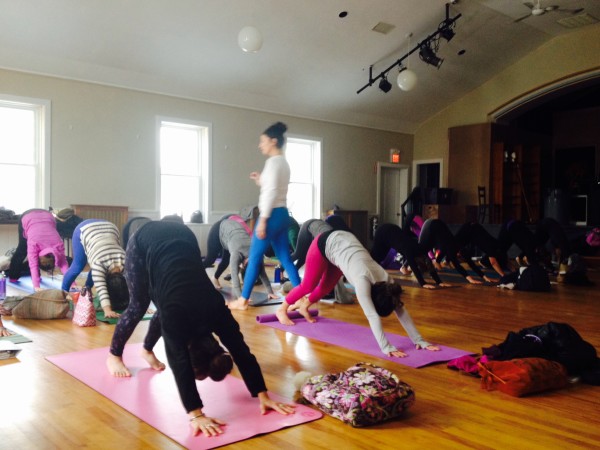
I’ve been teaching yoga for many years. I taught the day after 9/11, taught the day after the Boston Marathon bombings and the shooting at Sandy Hook, as well as a few days after the attack in Paris on November 13. Â I also taught last week, on Thursday, the day after the shooting in San Bernardino. There are more shootings than these that made national news, Â but these are the events that come to mind and certainly are etched in my own psyche as pivotal moments for us not only as citizens of the United States but as individuals.
On those days, as I approached teaching my classes, I was somewhat torn between acknowledging what had happened and not saying anything, keeping the studio space a sacred and safe oasis, free from distraction and conversation about the world. Â There are many different approaches to this kind of thing and in most cases, there is no right or wrong. It is more a matter of preference and what you are comfortable with as a teacher.
It does, however, bring up the conversation about how we can be “of service” as a yoga teacher. When we lead a class through an yoga practice, we are supporting the students through the physical movements of the sequence. The words we use, the sequence we offer, the support we give, both in our assisting and in our choice of words, all allow us to help them. It allows the students to build strength on a physical level as well as enhanced flexibility.
The space we offer to students gives them an opportunity to experience their practice in an environment free of distractions. The silence we offer during the practice gives their minds a chance to rest from all the news of the day. The smile we offer when we see them gives them a boost of positive energy, even if all around them is chaotic and scary. Showing up to teach gives them a sense of normalcy when around them things are in a dynamic state of change. Encouraging them to put away their cell phones allows them to disconnect from technology for a while. Cueing them on their breathing helps them tap into the relaxation response. Challenging them with different postures allows their mind to focus on something other than the news of the day.
The Yoga Sutras state that the aim of yoga is to “calm the fluctuations of the mind.” In times like these, we all need to calm our minds. We don’t know what’s ahead, we may be afraid. We may have experienced personal loss or know of someone who has and feel anxious. Practicing yoga allows people to calm the mind’s ebb and flow. So, as a teacher, the more we have faith in the process of yoga, the greater confidence we can have that simply offering the practice will do wonders to help ease the fears of our students, even if it’s only for the time that they are with us in class.
To say that being a yoga teacher is to be “of service” is not a statement designed to provide separation between student and teacher. It is simply a way to reinforce the important work that we all do when we step on the mat to work towards healing our body and minds. This healing is always important but even more so in times of challenge. Have faith in the process of yoga as a healing modality and know that the work you are doing will build up your reserves, both physically and mentally, so you are better able to face the challenges ahead.

Karen this is a wonderful and timely post! With the Paris attacks only weeks behind us, I taught a class as news was still breaking about the horrors, in our sister city only a train ride away. I have never been more aware of ‘holding space’ and making that class a place where people felt safe to feel whatever they needed to feel in that moment. I felt such huge responsibility as a teacher that morning, and also deeply grateful that people felt they could put their trust in me. Thank you for writing this beautifully honest piece. Much love dear one xxx
Donna, thanks for your note! I am sure your students were in great hands! Be well my friend! xo Karen